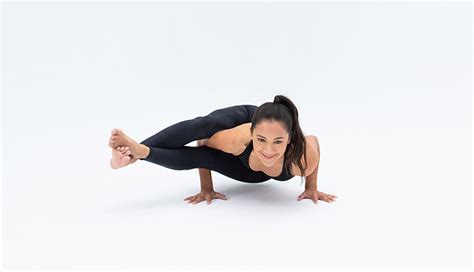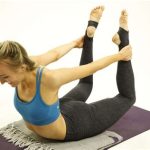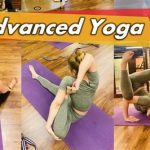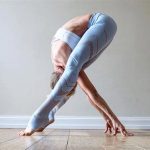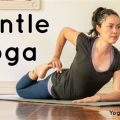The Most Challenging Advanced Yoga Poses: A Comprehensive Exploration
As yoga practitioners progress in their journey, the poses, or asanas, become increasingly difficult. Advanced yoga poses test flexibility, strength, balance, and mental focus. Each requires precision, commitment, and years of practice to master. This article delves into the most challenging advanced yoga poses, examining their physical demands, the historical evolution of these postures, and the necessary preparation for achieving them. By understanding these complex poses, practitioners can better approach their yoga practice with dedication and mindfulness.
Introduction
Advanced yoga poses are designed to push the boundaries of what the body and mind can achieve. These asanas require intense concentration, flexibility, and body strength. While they may seem unattainable for beginners, consistent practice can unlock these poses over time. This article will explore some of the most difficult advanced yoga poses, providing insights into their physical challenges, mental demands, and historical context, as well as offering practical advice for achieving them safely.
Key Concepts
Advanced yoga poses typically require a deep understanding of body mechanics, breath control, and mental focus. Here are some core concepts that play a critical role in mastering these postures:
- Flexibility: Many advanced asanas demand significant flexibility in the spine, hips, and hamstrings.
- Balance: Inversions and arm balances are common in advanced yoga and require substantial core strength and coordination.
- Strength: Physical strength is essential for holding poses like handstand and peacock pose without injury.
- Breathwork: Controlled breathing, or pranayama, enhances stability and focus during difficult poses.
- Mental Discipline: Advanced yoga is as much a mental challenge as it is physical. Staying calm and focused is key to success.
Historical Context
Yoga’s history spans thousands of years, evolving from spiritual and meditative practices to a widely practiced physical discipline. Advanced yoga poses, though often popularized in modern times, have roots in ancient yogic texts like the Hatha Yoga Pradipika and the Yoga Sutras of Patanjali. Originally, these poses were used to prepare the body for extended periods of meditation. For example, headstands and lotus pose were described as techniques to control the mind and maintain focus during spiritual practice. Over centuries, yoga masters developed more challenging poses to push the limits of the human body, making today’s advanced asanas a natural evolution of the practice.
Current State Analysis
In today’s yoga practice, advanced poses are often seen as milestones of physical prowess. These postures are frequently featured in social media, which can inspire practitioners but also create unrealistic expectations. Studios worldwide offer specialized classes for advanced practitioners, emphasizing the need for proper preparation and guidance to avoid injury. Common challenging poses include arm balances like crow pose and forearm stand, inversions like headstand and handstand, and deep backbends like full wheel. While there is no single list of the most difficult yoga poses, the consensus is that these types of postures represent significant physical and mental hurdles.
Practical Applications
Practicing advanced yoga poses offers numerous benefits beyond physical fitness. Mastering these postures can improve focus, patience, and determination. Some specific advantages include:
- Core Strength: Arm balances and inversions require significant core stability, which enhances overall physical strength.
- Flexibility: Deep backbends and forward bends improve flexibility, especially in the spine, hips, and shoulders.
- Balance and Coordination: The challenge of balancing on one’s hands or head develops fine motor skills and spatial awareness.
- Mental Focus: Advanced asanas require mental discipline, helping practitioners to cultivate mindfulness and reduce stress.
However, it’s crucial to approach these poses with patience and a commitment to safety. Warm-ups, strength-building exercises, and flexibility drills are essential to avoid injury.
Case Studies
Case studies from long-time practitioners illustrate both the challenges and rewards of mastering advanced yoga poses:
| Pose | Practitioner Experience | Challenges | Solutions |
|---|---|---|---|
| Handstand | Yogi A practiced for 5 years before achieving a stable handstand. | Fear of falling and lack of core strength. | Incorporated core exercises and practiced against the wall for support. |
| Lotus Pose | Yogi B faced flexibility issues in the hips. | Pain in knees due to improper alignment. | Worked with a yoga teacher to adjust hip mobility and alignment techniques. |
| Scorpion Pose | Yogi C found balancing in an inversion with backbend difficult. | Limited shoulder flexibility. | Practiced shoulder-opening exercises and used props to maintain balance. |
Stakeholder Analysis
There are various stakeholders involved in the progression toward advanced yoga postures:
- Yoga Practitioners: The individuals working towards mastering these poses, requiring both physical and mental investment.
- Yoga Instructors: Responsible for guiding practitioners safely and effectively through the challenging stages of these poses.
- Medical and Health Professionals: Often involved when injuries occur, highlighting the importance of correct technique and gradual progress.
- Yoga Studios: Play a crucial role in providing the appropriate environment and training for practitioners aiming to reach advanced levels.
Implementation Guidelines
To safely approach advanced yoga poses, practitioners should follow these steps:
- Develop Foundational Skills: Before attempting advanced poses, ensure mastery of basic and intermediate postures.
- Strength Training: Build core and upper body strength through supplemental exercises like planks, push-ups, and core workouts.
- Flexibility Work: Incorporate stretching routines focusing on hips, shoulders, and the spine.
- Use Props: Props like blocks, straps, and walls can help in developing balance and strength for difficult asanas.
- Seek Professional Guidance: Work with a certified yoga instructor to receive personalized feedback and corrections.
- Consistency: Practice regularly and gradually increase the difficulty of the poses over time.
Ethical Considerations
As yoga gains popularity, the push to achieve advanced poses can sometimes lead to unhealthy competition or injury. Ethical considerations include:
- Body Respect: It’s essential for practitioners to listen to their bodies and avoid pushing beyond their limits.
- Non-Comparison: Yoga is a personal practice. Comparing oneself to others can lead to frustration and injury.
- Safety Over Aesthetics: The goal of yoga should be personal growth and well-being, not achieving poses solely for visual appeal.
Limitations and Future Research
Despite the many benefits of advanced yoga poses, there are limitations. Not all practitioners can safely perform these postures due to physical constraints such as age, injury, or medical conditions. Furthermore, there is limited research on the long-term effects of regularly practicing challenging poses. Future studies could investigate the impact of advanced yoga on joint health, muscle strength, and mental well-being, particularly in aging populations. Additionally, understanding how modern technology, such as virtual classes and AI-assisted yoga instruction, may help or hinder the progression towards these poses could provide valuable insights for the future of yoga practice.
Expert Commentary
Yoga experts agree that advanced poses represent a deep commitment to the practice. While these postures offer great physical and mental rewards, it’s important for practitioners to approach them with care, patience, and humility. Experienced teachers emphasize that mastery of advanced asanas isn’t about perfection but about the journey toward greater body awareness and control. Ultimately, yoga is a personal practice that should be tailored to the individual, and advanced poses are just one part of this lifelong exploration.
